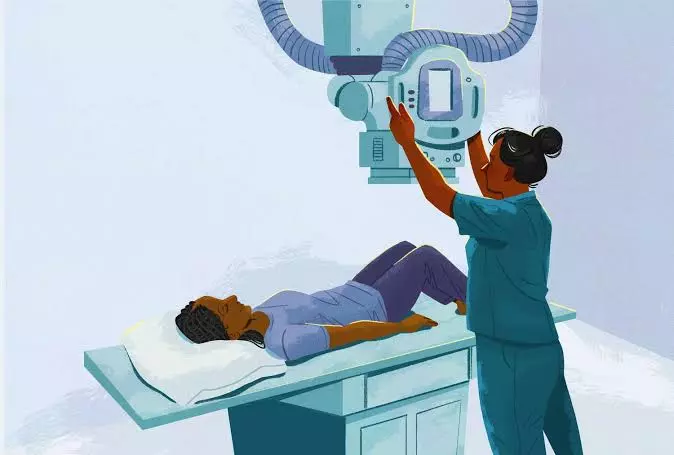Uterine fibroids can be uncomfortable and pervasive in women and influence a woman’s health in several ways.
For people managing this ailment, it is essential to comprehend the various therapy alternatives. This guide will review five important things to consider in this article while looking for uterine fibroids therapy.
1: Monitoring and Lifestyle Changes
For individuals with small fibroids, immediate intervention may not be necessary. Instead, a proactive approach involving regular monitoring and lifestyle changes can effectively manage symptoms and prevent further fibroid growth.
Regular check-ups with a healthcare professional allow for monitoring fibroid size and any changes in symptoms over time.
A healthy diet rich in fruits, vegetables, and whole grains can provide essential nutrients and support overall well-being. Regular exercise is also beneficial, as it helps maintain a healthy weight and may contribute to symptom management.
While these lifestyle changes may not eliminate fibroids, they can positively impact overall health and alleviate certain symptoms associated with fibroid growth.
This approach provides a non-invasive option for individuals with small fibroids to participate in their well-being and manage fibroid-related symptoms actively.
2: Medications for Symptom Relief
For women experiencing symptoms related to uterine fibroids, medical interventions, particularly hormonal medications, can offer effective relief.
Hormonal treatments aim to regulate hormonal levels in the body, addressing specific symptoms associated with fibroid growth.
One common approach involves the use of hormonal contraceptives, such as birth control pills, which can help regulate menstrual cycles and manage heavy bleeding.
Another choice is to take gonadotropin-releasing hormone agonists (GnRH agonists). These medications induce a temporary menopausal state, leading to a reduction in estrogen levels and subsequently shrinking fibroids.
While hormonal treatments can provide symptom relief for some women, it’s important to note that they are not a permanent solution and may be associated with side effects.
Consulting with a healthcare professional is essential to determine the most appropriate medication based on individual health considerations and the specific symptoms experienced due to uterine fibroids.
3: Non-Invasive Procedures
For individuals exploring alternatives to traditional surgery for uterine fibroids, non-invasive procedures present viable options with the potential for reduced recovery time and discomfort.
Two of these methods are uterine artery embolization and targeted ultrasonography surgery. The less intrusive option for surgery is uterine artery embolization, which entails injecting small particles into the blood arteries to nourish the fibroids and cause them to shrink.
Focused ultrasonic surgery uses high-frequency ultrasound waves to target and kill fibroid tissue. Both procedures aim to provide effective fibroid treatment while minimizing the impact on the patient’s daily life.
Residents seeking non-invasive uterine fibroid treatment in Memphis, TN, can consult with healthcare professionals specializing in fibroid treatment to explore the most suitable approach based on their health needs and preferences.
Open discussions with healthcare providers ensure informed decision-making for an individualized treatment plan.
4: Surgical Options
In cases where fibroids are larger or causing significant issues, surgical interventions may be recommended as more definitive treatment options.
Two common surgical procedures for addressing uterine fibroids are myomectomy and hysterectomy. A myomectomy is a good choice for women who want to keep their fertility since surgery removes individual fibroids while leaving the uterus intact.
Conversely, a hysterectomy involves the excision of the uterus entirely. It is considered a more radical approach, often recommended when fertility preservation is not a priority or when other treatments have proven ineffective.
Both procedures aim to alleviate symptoms associated with fibroids, and the choice between them depends on individual health considerations, future fertility desires, and the extent of fibroid-related complications.
Speaking with a healthcare expert is imperative for a thorough assessment and discussion of the best surgical option suited to the patient’s unique needs and objectives.
5: Emerging Therapies
Continual advancements in medical research have led to innovative therapies, with magnetic resonance-guided focused ultrasound surgery emerging as a promising noninvasive option for treating uterine fibroids.
This cutting-edge approach utilizes magnetic resonance imaging (MRI) to guide high-intensity ultrasound waves precisely to the fibroid tissue, causing thermal ablation and promoting fibroid shrinkage.
Unlike traditional surgical procedures, this non-invasive therapy eliminates the need for incisions, offering reduced recovery times and minimizing discomfort for patients.
Magnetic resonance-guided focused ultrasound surgery is particularly appealing for women seeking alternatives to surgery or other invasive interventions.
As this field of medical technology continues to evolve, it provides new avenues for tailored and patient-centric treatments, showcasing the potential for more personalized and less intrusive approaches to managing uterine fibroids.
Individuals interested in exploring these emerging therapies can consult with healthcare professionals to stay informed about the latest developments and determine the most suitable options for their unique health needs.
Conclusion
The size of the fibroid, the degree of symptoms, and the patient’s reproductive objectives all play a role in determining the best course of therapy for uterine fibroids.
Consulting with a healthcare professional is crucial for developing a personalized treatment plan that aligns with individual needs and preferences.

